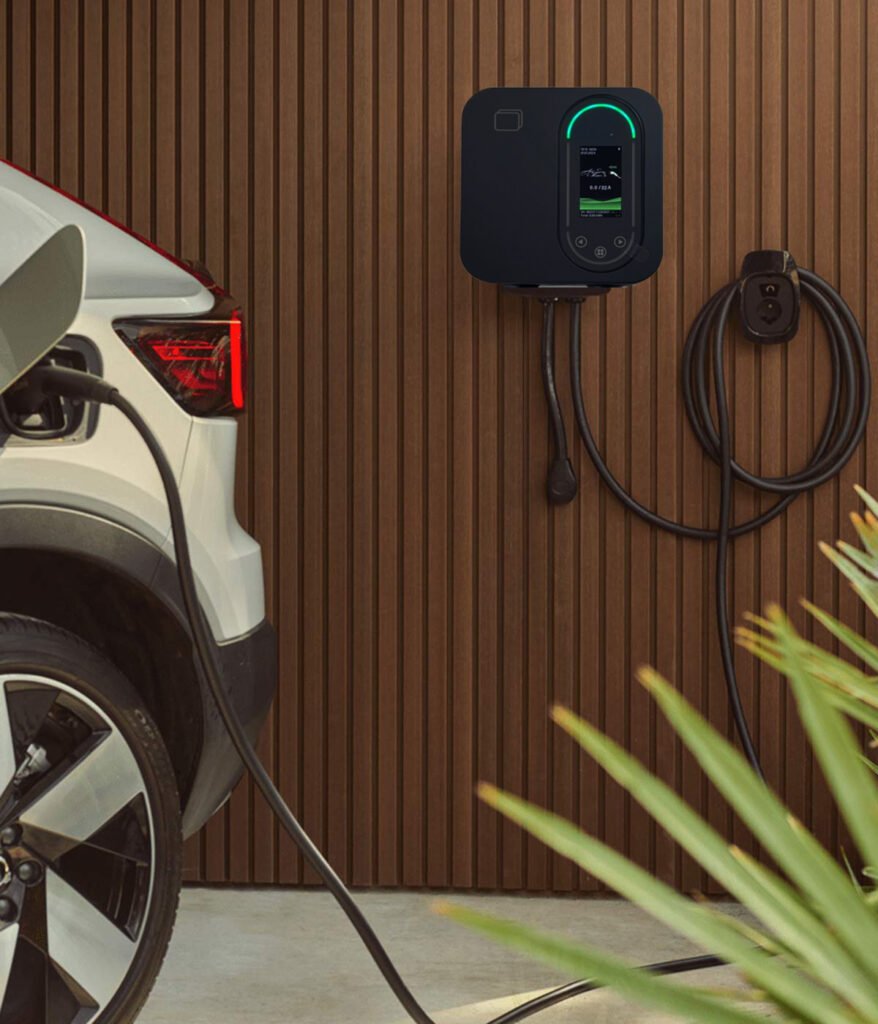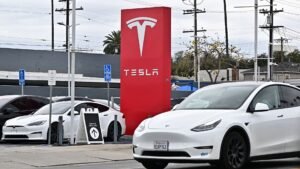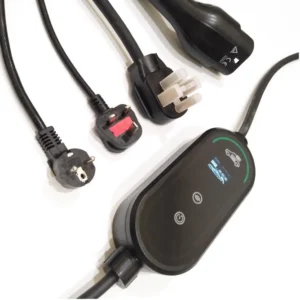Why consider installing two EV chargers at home?
The most obvious benefit is convenience. If you and your partner (or family member) both drive electric cars, waiting for one to finish charging before plugging in the second can be frustrating and time-consuming. Installing two chargers allows you to charge at the same time, saving time and ensuring that both cars are ready when you need them.
It also provides charging flexibility, reduces reliance on public chargers and can extend battery life with slow overnight charging at home.
Considering that each country and region has a different electricity supply, here we will take a European household as an example to analyze in detail whether it is feasible to install two electric car chargers at home.

Electricity supply in European homes: can the grid handle it?
In Europe, most modern homes, especially in cities and newer residential areas, have access to three-phase power, which offers significant advantages over the single-phase systems common in other regions such as the UK or the US.
A three-phase system can easily support two 11kW EV chargers (or even more, depending on the household load).
– Each charger typically requires a dedicated circuit of 16A to 32A.
– The key is to assess your home’s total available capacity (typically 3x16A or 3x32A) and make sure it can support two EV chargers as well as other household loads such as heating, air conditioning and appliances.
A certified electrician or energy consultant can perform load calculations to verify feasibility. In many cases, especially with three-phase service, two chargers can be installed with little or no system upgrades.
The load technology mentioned above may be many people do not quite understand, so let me briefly introduce you to what is load balancing technology?
What is Load Balancing Technology?
If your home’s total capacity is limited, installing smart chargers with dynamic load balancing is a great solution. These chargers
– Monitor total household energy consumption in real time.
– Automatically adjust the charging power of each EV to prevent overloading.
– Prioritise charging according to user preferences or scheduling.
For example, if your dishwasher, heat pump and oven are running, the charger reduces the output power until these appliances are switched off. Once the load is reduced, the charger resumes charging at full speed.
Dynamic load management is often required by European grid regulations when installing multiple high-power appliances.
Another thing we need to consider is the cost we need to spend when we install 2 EV chargers.

Considering Installation costs: Expected costs
The cost of installing a wall-mounted charger typically ranges between €1,000 and €1,500, depending on the following factors:
– Brand and functionality of the charger (e.g. OCPP, Wi-Fi, RFID)
– Complexity of the installation (cable routing, fuse box location, trenching)
– Price of local labor
Installing two chargers does not necessarily double the cost, but a two-way installation with proper circuit protection, cabling and possibly a load-balancing system will cost around €1,800 to €2,500.
Note: Some governments and local utilities in Europe offer rebates or tax incentives for residential EV charging system installations, so be sure to check for incentives in your area.
Alternatives to installing two separate chargers
Use a dual port charger
Instead of installing two separate units, you can install a Dual Output Charger which can charge two EVs at the same time. These devices
– usually share a common power connection.
– Built-in load management for even power distribution.
– More compact and cost-effective for tight spaces. 2.

Sequential charging through intelligent scheduling
If two vehicles do not need to be charged at the same time, a single charger with app-based scheduling is sufficient. Many EV owners charge overnight, and smart apps can set the priority, start/end time and charging mode for each vehicle.
Combining Level 2 and Level 1 charging
If only one car needs to be fully charged every day and the second car is used less frequently, maybe
– Install a Level 2 charger (7 kW to 22 kW, depending on your system)
– use the car’s factory-supplied Level 1 charger (via a standard socket) for slow overnight charging of the second car
This method requires no electrical upgrades, but is a slower charging method best suited for light electric vehicles.
New intelligent solar charging
With the rise of two-way charging (V2G/V2H), solar integration and dynamic tariffs, investing in smart EV charging infrastructure now can increase the energy flexibility and value of your home. When planning for two chargers:
– Choose devices that support the OCPP protocol for platform interoperability
– Consider models with solar charging compatibility
– Ensure appropriate circuit protection and safety certifications (CE, TÜV, etc.)
Also consider potential upgrades such as battery storage systems, especially if rooftop solar is considered in the future.
Conclusion
Yes, it’s perfectly possible for you to install two EV chargers in your home – especially in Europe, where three-phase power makes it more feasible. This decision depends on your driving habits, available power capacity, budget and long-term energy goals.
Whether you choose two separate chargers, a dual-port unit or a smart sharing strategy, today’s EV charger technology offers flexibility for households with multiple EVs. Consulting a licensed installer is the best next step in evaluating your situation and designing the most efficient solution.








